Claire Mabey – 27 April, 2014
The anecdotal insights into the creation of the All the Seas and the Oceans project enhanced, but also undermined, my experience of the exhibition. After hearing the stories of packages arriving to the gallery, posted carefully by individuals all over the planet, it is difficult to accept the final iteration of All the Seas as complete, despite it being inarguably elegant.
Let’s start with one of the works: All the Seas is a display of 365 bottles of sea water sent to the Fruitmarket Gallery by 250 people from around the world. Each package varied - from the material to the hand writing; and once opened, it was discovered that some collectors had illustrated their bottles or vessels, written notes, sent photos and letters. Tania Kovats herself flew to New Zealand to collect water from Cape Reianga.
Once all of the samples had been received, Fiona Bradley (The Fruitmarket Gallery Director) and Kovats decided (with some difficulty) to decant all of the water out of the original bottles, for display in the final work. Each parcel received told both a personal and global story; of time and travel, with each contribution being a small revelation of what the gathering of the sea can convey to the collective on geographical, emotional, cultural and psychological levels.
Its final object - shelves of bottles, labeled by collector and their sea - is a rather clinical library of those individuals’ contribution to a vast concept, and a revealing centrepoint to Oceans - a bigger exhibition designed to take you through Tania Kovats‘ explorations of an artist’s relationship with sea, land and time.
The anecdotal insights into the creation of the All the Seas and the Oceans project enhanced, but also undermined, my experience of the exhibition. After hearing the stories of packages arriving to the gallery, posted carefully by individuals all over the planet, it is difficult to accept the final iteration of All the Seas as complete, despite it being inarguably elegant. All of the specimens decanted into variously shaped specimen bottles are presented as a shelved catalogue reminiscent of those of the 18th Century. Each bottle is numbered to a corresponding name (of the collector) and sea. It is an impressive structure - towering and expansive with the range of bottles and the water within them tinted differently, showing the colour and something of the nature of its source.
All the Seas is also as isolating as much as it is embracing. The sea, and the art inspired by it, is sublime, beautiful and Romantic - in the capital ‘R’ sense that contemplating the oceans can be a solipsistic act, and one that reminds us of all of the time we will not see and all of the depths we will not plumb.
But while All the Seas is beautiful in that it is pristine, scientific and highly stylized - almost like something you could find in a high-end design store - it is void of the signs of all of the individuals that make this project as vast as it is, and that it needs to be in order convey the enormity of the idea that oceans link us together - in time, in space and in psychology. Other than a printed name, there is nothing of the individual collector in sight. Without the evidence (those personal notes, illustrations, packages and vessels) - of the hundreds of individuals who had put something of themselves into the offering of a piece of their home - there was a sense of loss. As though something had gone astray along the journey between the collector, the artist and the gallery.
Nevertheless, what All the Seas lacks in revealing the heart of its narrative, Oceans makes up for in contextualizing Kovats‘ past explorations of the sea. All the Seas is an island surrounded by the artist’s previous work, which lead us in an exploration of her attempts to discover the idea of the sea, and which led her toward the global project that is All the Seas. There are tables of atlases laid out on plinths across the gallery floor (Only Blue, 2013). Each book is open to reveal pages upon which a land mass that has been painted out with white, exposing the surrounding and internal waters.
And on the other side of the All the Seas installation is a small space with a sweeping triptych photograph of Cape Reinga, showing just the deep, rigorous water. Both works illuminate something of what it is that is so utterly essential about water, and the seas. The seas are not just the negative space surrounding land, but rather they are the historical and mythological means of exploration and discovery. Ideas of documentary and time are also at the forefront of Oceans - photography and cartography as symbols of the time that journeying across the oceans affords the traveller - both the historical and the present.
The upper level of Oceans holds Kovats’ grander, sculptural works exploring the voluptuous, the vast and the visceral. Schist (2001) and Mountain (2001) are dark, plump folds echoing the sea bed and the endless activity of the earth beneath the water. Reef 1 and Reef 2 are large-scale chunks of chalk-white barnacles. They lie quietly, washed up and resting on the floor like seals beneath the vast view of Sea Mark (2014). Sea Mark is paint on tiles mapping out a calm sea stretching out towards a horizon - never-ending. Being the traditionally wet items that they are, the tiles are shining with the promise of water and watery places. This work encapsulates the connections between home, land and sea. For those of us who live on the coasts of these unimaginable depths, gazing onto the surface of that which surrounds us, this work is particularly potent. Sea Mark encapsulates the attempt to bring the sea in; the capture and attainment of its aesthetic, emotional and psychological depths.
Tania Kovats‘ publication (as editor) The Drawing Book - a survey of drawing: the primary means of expression, is present throughout every stage of Oceans (you walk through the shop to get to the exhibition, and it is tied to every table in the open plan reading room). While reading it, I thought of Michael Smither’s drawings of the waves in Taranaki, and his thoughts on the continuous passing of time measured by the ebb, flow and crash of the waves.
Oceans is one artist’s contemplation of the sea and its powers of connection as much as isolation. It is hard not to feel the absence of its heart - in that first and central work, All the Seas. The idea that the people behind the essential element of such a work - the collection of all of the oceans - can be dis-placed and hidden leaves the work only half-finished, for me. But the deeper we wade into the surrounding works, the more we realize the incredible, and never-ending, relationship that artists (in their role as explorers into collective human experience) have with the sea - the deepest of metonyms. The very nature of exploring the sea and our relationships with it, and because of it, suggests that from Kovats there may still be much more to come.
Claire Mabey
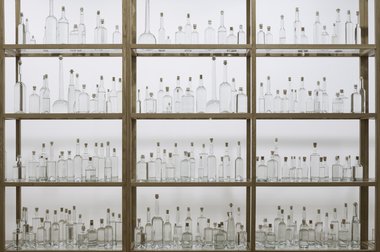

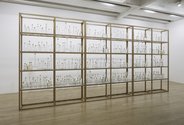

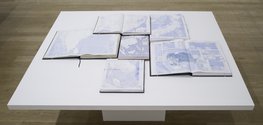

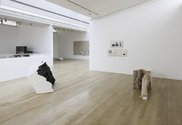

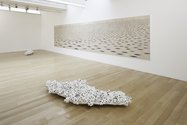
 Two Rooms presents a program of residencies and projects
Two Rooms presents a program of residencies and projects Advertising in this column
Advertising in this column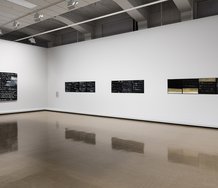
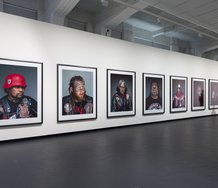
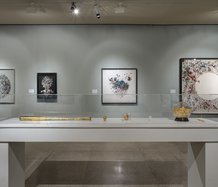
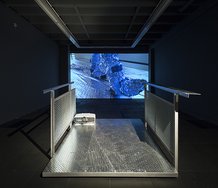
This Discussion has 0 comments.
Comment
Participate
Register to Participate.
Sign in
Sign in to an existing account.